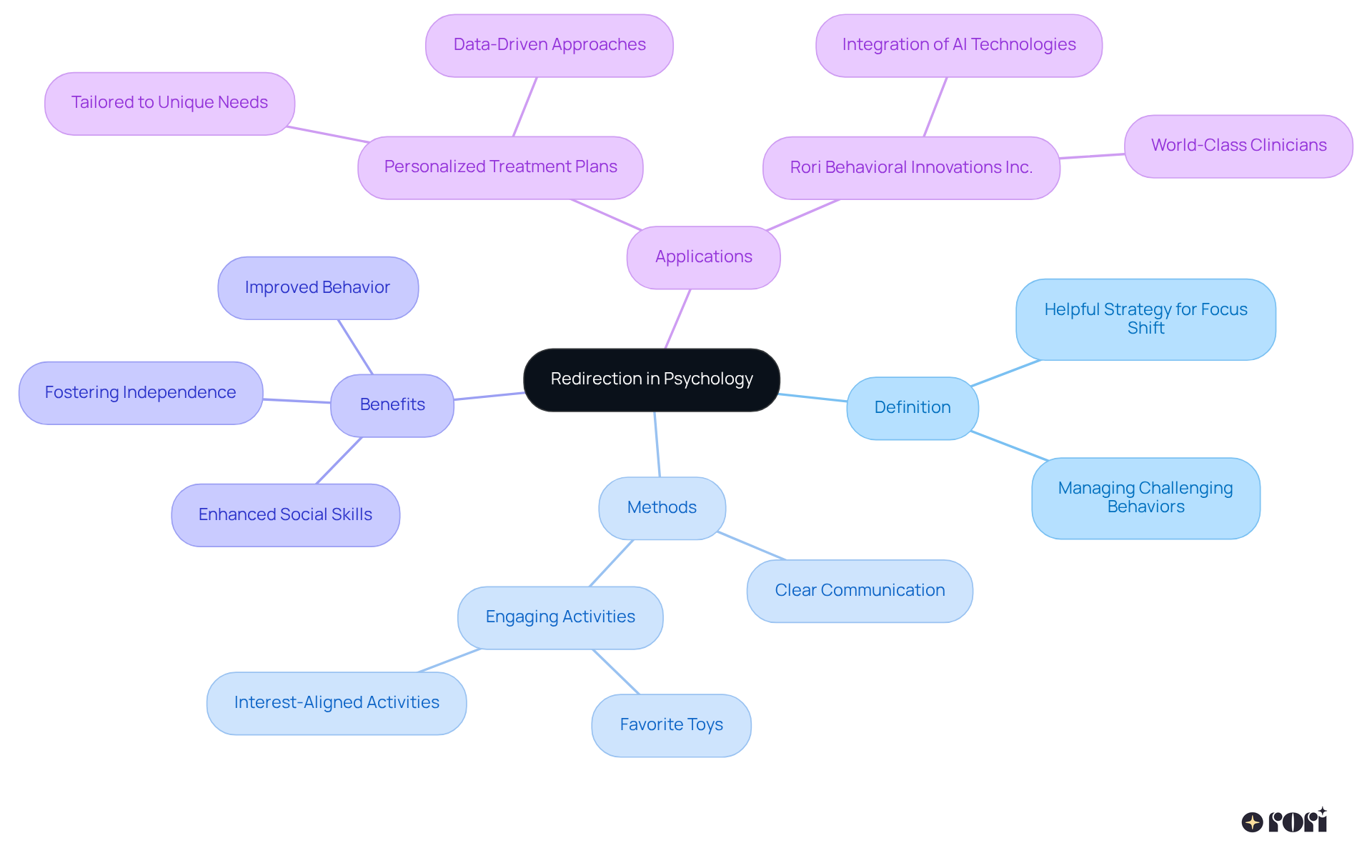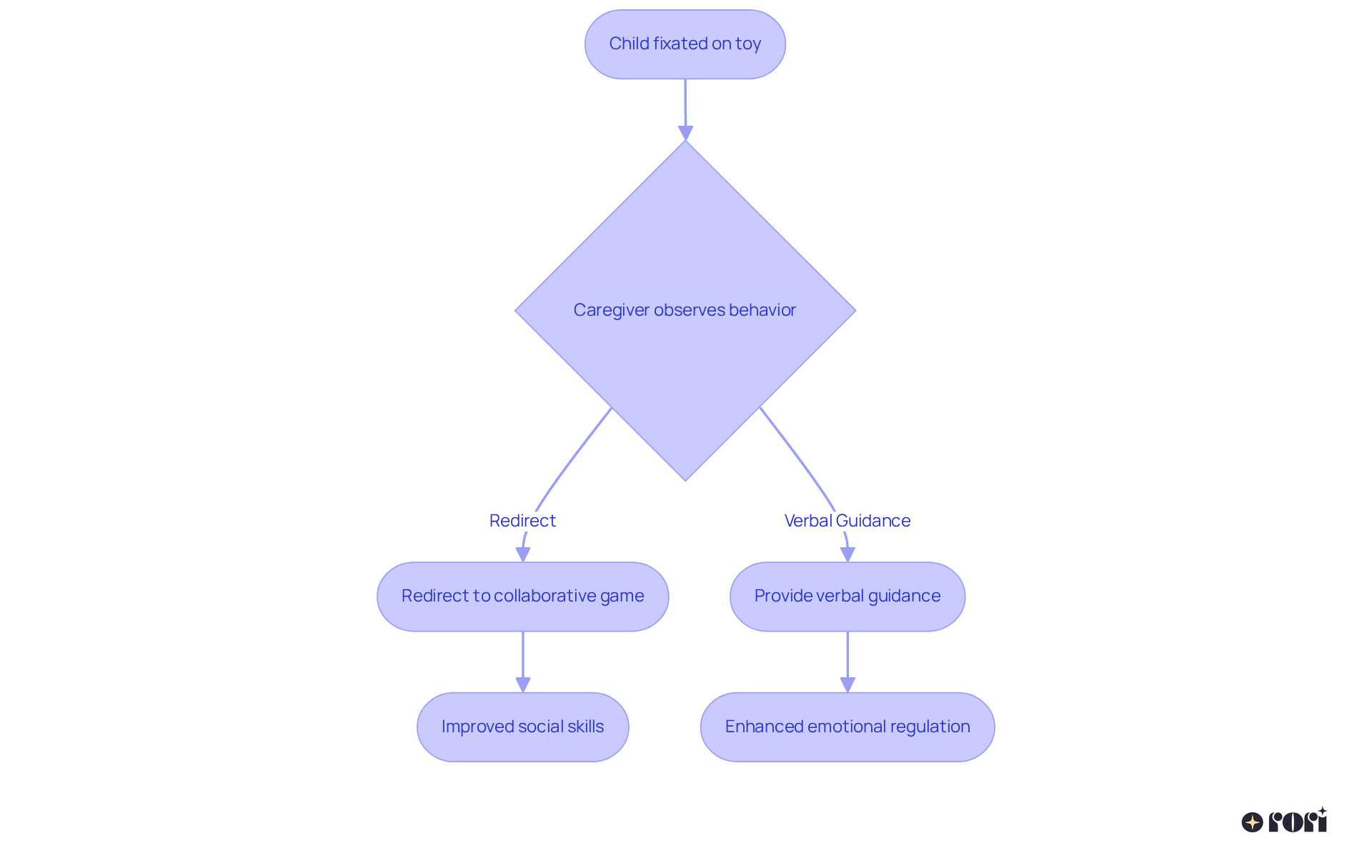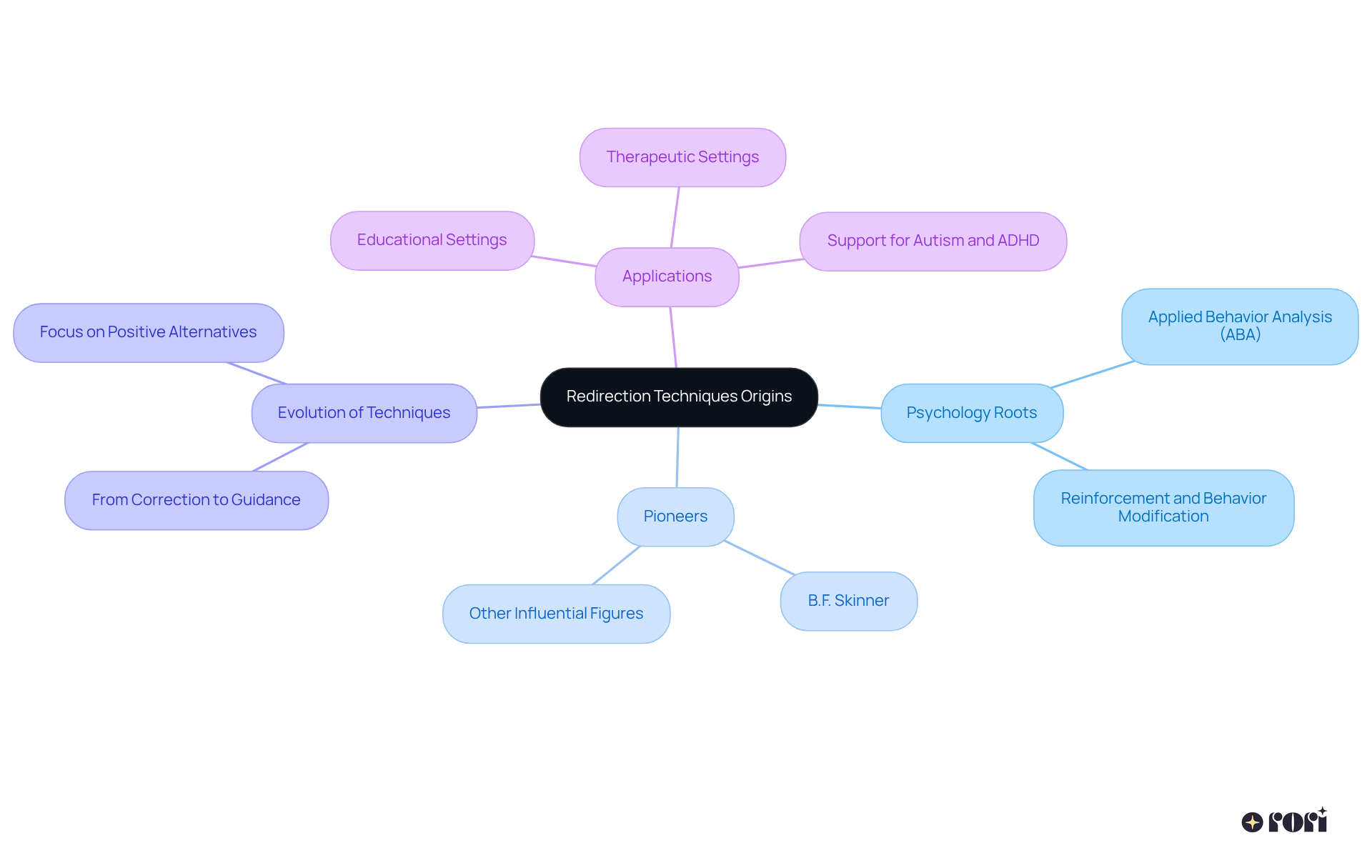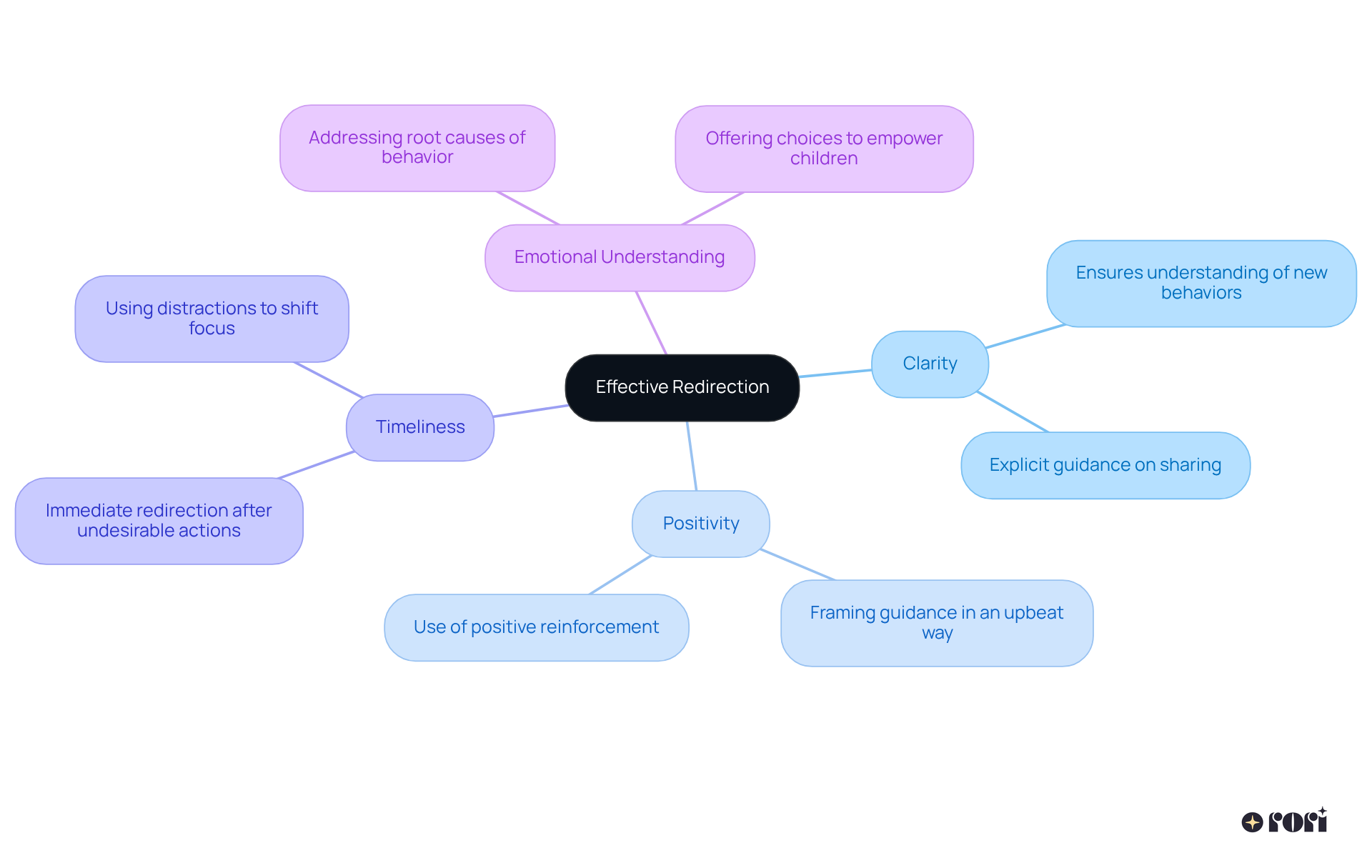Redirection in psychology is a helpful strategy that shifts a child's focus from negative behaviors to more positive activities. This approach is especially beneficial when managing challenging behaviors in children, particularly those with autism. By using clear communication and engaging activities, effective redirection teaches alternative behaviors. This not only improves social skills and emotional regulation but also supports positive child development.
Let’s explore this together! Imagine a child who tends to throw tantrums when they don’t get their way. Instead of just saying 'no,' redirecting their attention to a fun activity can make a big difference. This simple shift not only helps them learn how to cope but also encourages them to engage in more positive interactions.
By focusing on these alternative behaviors, we can create a more supportive environment for our little ones. It’s all about fostering those moments of connection and understanding. Remember, we’re here to help you every step of the way! 🌟
Redirection in psychology is a powerful tool for shaping children's behavior, especially for those facing developmental challenges. By shifting the focus from negative actions to positive alternatives, caregivers can create a nurturing environment that promotes learning and emotional growth. But here’s a thought: how can we tailor these strategies to ensure every child not only understands but truly thrives with this guidance?
Exploring the nuances of redirection techniques reveals their profound impact on child development and social interaction skills. It’s essential for caregivers and educators to master this art. Let’s dive into this together and uncover how redirection can make a difference in our children’s lives!
Redirection definition psychology refers to a helpful strategy for shifting an individual's focus from a negative or unwanted activity to something more positive. This technique is especially beneficial for managing challenging behaviors in children, particularly those on the autism spectrum. By effectively redirecting a young person's attention, caregivers and educators can help them learn alternative behaviors and coping strategies. This not only creates a better learning environment but also boosts social interaction skills.
Effective redirection methods often involve clear communication and engaging activities that capture a child's interest. For instance, if a child is fixated on a disruptive behavior, a caregiver might introduce a favorite toy or activity that aligns with their interests. This gentle guidance leads them toward a more positive engagement. Not only does this approach ease the immediate issue, but it also teaches valuable skills for future interactions.
When it comes to autism, tailored behavioral strategies can really make a difference. Customized treatment plans, like those offered by Rori Care - ABA Therapy, are designed to meet each child's unique needs, ensuring that the redirection definition psychology is applied in a relevant and effective manner. By blending the principles of Applied Behavior Analysis (ABA) with active caregiver involvement, Rori helps families achieve wonderful results. They assist children in improving their behavior, developing social skills, and fostering independence. The involvement of qualified analysts in crafting personalized plans enhances the effectiveness of these strategies, providing families with the support they need.
Ultimately, guidance is a vital tool for managing children's behavior, promoting positive growth, and enriching the overall learning experience for individuals with autism. Let’s explore this together and see how we can make a difference!

In the world of youth development, guidance plays a crucial role in encouraging positive actions and managing emotions, particularly within Applied Behavior Analysis (ABA) therapy. Many children, especially those with autism, face challenges with impulse control and understanding social cues. For example, if a child is fixated on a toy during a group activity, a caregiver might gently use the redirection definition psychology to shift their attention to a fun collaborative game. This not only helps the child learn appropriate behaviors but also boosts their social skills and emotional intelligence.
At Rori Care, we believe that the individual is at the heart of everything we do. Our clinical leadership team conducts thorough assessments to ensure that adjustment strategies are tailored to each child's unique needs. By providing education to our caregivers within ABA therapy, we equip them with the essential principles and strategies to actively support their child’s behavioral goals. Recent studies show how effective guidance, in line with the redirection definition psychology, can be in helping children with autism improve their emotional regulation and social skills, ultimately fostering their overall growth and independence. By encouraging active involvement from caregivers, we enhance the support given at home, complementing professional interventions and promoting consistency in behavioral outcomes. Let’s explore this journey together!

The redirection definition psychology has its roots in psychology, particularly within applied behavior analysis (ABA). Pioneers like B.F. Skinner emphasized the importance of reinforcement and behavior modification. Over time, it became clear that simply correcting undesirable behaviors wasn't enough. Instead, the focus shifted to guiding young people toward positive alternatives. This change led to the development of techniques explained in the redirection definition psychology, which are now widely used in educational and therapeutic settings to help kids learn appropriate behaviors and coping strategies.
At Rori Care, we believe in empowering families and supporters with ABA principles and strategies. It’s essential for effective behavioral support! Our patient-centered approach ensures that everyone, including those facing challenges like Autism Spectrum Disorders, ADHD, and learning disabilities, receives personalized attention. By actively involving caregivers and emphasizing the importance of data collection, we enhance the effectiveness of our guidance strategies. Ultimately, this leads to better behavioral outcomes for youth with autism and other related challenges. Let’s explore this together!

Effective guidance has a few key characteristics that can really make a difference: clarity, positivity, timeliness, and an understanding of the young person's emotions. Clarity ensures that the child grasps the new behavior or focus being encouraged, which is so important for effective intervention. Positivity is crucial too! By framing guidance in an upbeat way, we help the young person feel more open to support.
Timeliness is just as important; according to the redirection definition psychology, redirection should happen right after we notice an undesirable action to really boost its effectiveness. For instance, if a child starts to act disruptively, a guardian might gently say, 'Let's use our quiet voices while we read this book together.' This helps steer their focus to a more suitable activity. Plus, adding in some positive reinforcement—like praise or small rewards—can really encourage those desired behaviors.
Understanding the emotions behind a child's behavior is also key. It allows caregivers to address the root causes of challenging actions. Offering choices during the redirection definition psychology can empower kids and reduce resistance, making them more likely to engage positively. By applying ABA principles, such as aligning strategies and collecting data, caregivers can deepen their understanding of these techniques, leading to better behavioral outcomes.
This active involvement not only supports the child's growth but also empowers caregivers, creating a consistent and nurturing environment that promotes learning. Let’s explore this together! We’re here to help you every step of the way!

Redirection in psychology is such an important tool for helping children shift their focus from negative behaviors to positive ones. This approach not only helps in managing tough situations but also nurtures vital skills like emotional regulation and social interaction. By understanding and using effective redirection methods, caregivers and educators can create warm environments that support growth and learning, especially for children on the autism spectrum.
Throughout this article, we’ve highlighted how clarity, positivity, and timeliness are key in redirection techniques. Tailored strategies, like those from Rori Care, are essential for addressing each child's unique needs. The journey of redirection has evolved from simple behavior correction to a more supportive and constructive approach, thanks to its roots in applied behavior analysis. This evolution empowers caregivers to address the emotions behind behaviors and offer choices that boost engagement.
Ultimately, redirection plays a significant role in child development—not just for immediate behavior management, but for fostering long-term emotional and social growth. By actively involving caregivers in this process and promoting consistent support, families can create an environment where children truly thrive. Embracing redirection principles can lead to transformative outcomes, so let’s explore these strategies together for the benefit of our children’s development!
What is redirection in psychology?
Redirection in psychology refers to a strategy for shifting an individual's focus from negative or unwanted activities to more positive ones, particularly useful for managing challenging behaviors in children.
How is redirection beneficial for children on the autism spectrum?
Redirection helps children on the autism spectrum by allowing caregivers and educators to guide them towards alternative behaviors and coping strategies, enhancing their learning environment and social interaction skills.
What are effective methods of redirection?
Effective redirection methods involve clear communication and engaging activities that capture a child's interest, such as introducing a favorite toy or activity when a child is fixated on disruptive behavior.
How does redirection teach children valuable skills?
By redirecting a child's attention to positive engagements, caregivers not only address immediate issues but also teach them skills for better future interactions.
What role do customized treatment plans play in redirection for children with autism?
Customized treatment plans, like those offered by Rori Care - ABA Therapy, are tailored to meet each child's unique needs, ensuring that redirection strategies are applied effectively.
How does Rori Care - ABA Therapy enhance the effectiveness of redirection strategies?
Rori Care enhances the effectiveness of redirection strategies by blending Applied Behavior Analysis (ABA) principles with active caregiver involvement, helping children improve behavior, develop social skills, and foster independence.
Why is guidance important in managing children's behavior?
Guidance is crucial for managing children's behavior as it promotes positive growth and enriches the overall learning experience, especially for individuals with autism.